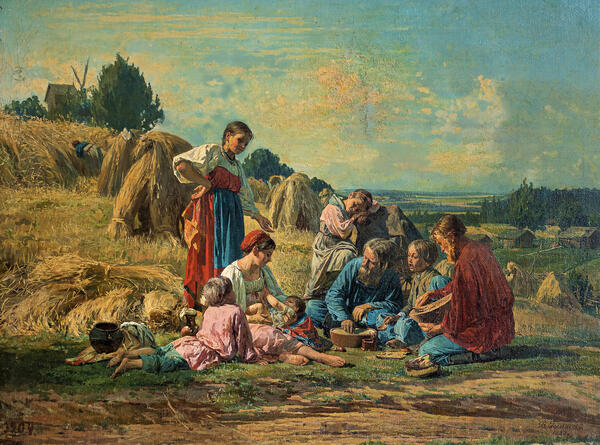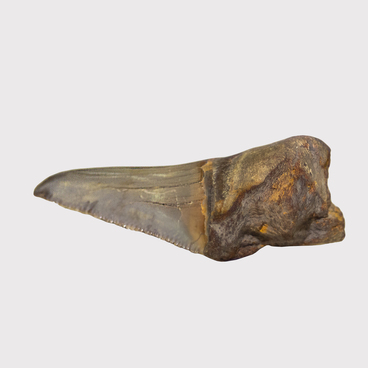Painter Vasily Golynsky was born in 1854 in the village of Belyanitsy, the Tver province. He received his initial art education at the district school of the city of Bezhetsk under the guidance of his brother and drawing teacher S. G. Morozov.
After leaving school, Vasily Golynsky came to St. Petersburg and entered the Imperial Academy of Arts without entrance exams. During his studies, he was awarded small and large silver medals several times. Vasily Golynsky graduated in 1877 with the title of class painter of the first degree, which was appointed to him for the painting ‘Marriage at Cana’, dedicated to the miracle of the transformation of water into wine.
Class painters were called graduates of the Imperial Academy of Arts, who received a civil rank in the Table of Ranks. For example, a class painter of the first rank was awarded a large gold medal and became a titular councilor. Non-class painters were called free painters and they had no rank.
Vasily Golynsky regularly participated in exhibitions of the Imperial Academy of Arts and the Society for the Encouragement of Artists. He did successful genre paintings, which, however, did not become popular. In the second half of the 19th century, the public was interested in Peredvizhniki artists and their paintings on social topics, while Vasily Golynsky’s artworks mainly followed the canons of classicism and Russian academic painting, which main criteria of art were proportionality and beauty.
Vasily Golynsky created many distinctive paintings, including “Breakfast at Harvest Time”, presented in the museum’s collection. This canvas captures a peaceful scene from the unhurried peasant life against the background of Russian nature.
During the period of strenuous summer work consisting of haymaking, reaping, and harvesting, whole families of peasants went out into the fields, and if the harvest was big, they asked their fellow villagers to help.
In the foreground, by the road, Vasily Golynsky placed a group of peasants who have breakfast after the morning harvesting. It consists of two boys, a little girl, two older girls, one of whom plays with a baby, and two men. They are dressed in bright, neat clothes.
Behind the figures is a field with ricks of grain and a dense row of unharvested ears. In the distance, there is a figure of a bending down, working peasant woman, in a blue shirt and a gray sundress.
After leaving school, Vasily Golynsky came to St. Petersburg and entered the Imperial Academy of Arts without entrance exams. During his studies, he was awarded small and large silver medals several times. Vasily Golynsky graduated in 1877 with the title of class painter of the first degree, which was appointed to him for the painting ‘Marriage at Cana’, dedicated to the miracle of the transformation of water into wine.
Class painters were called graduates of the Imperial Academy of Arts, who received a civil rank in the Table of Ranks. For example, a class painter of the first rank was awarded a large gold medal and became a titular councilor. Non-class painters were called free painters and they had no rank.
Vasily Golynsky regularly participated in exhibitions of the Imperial Academy of Arts and the Society for the Encouragement of Artists. He did successful genre paintings, which, however, did not become popular. In the second half of the 19th century, the public was interested in Peredvizhniki artists and their paintings on social topics, while Vasily Golynsky’s artworks mainly followed the canons of classicism and Russian academic painting, which main criteria of art were proportionality and beauty.
Vasily Golynsky created many distinctive paintings, including “Breakfast at Harvest Time”, presented in the museum’s collection. This canvas captures a peaceful scene from the unhurried peasant life against the background of Russian nature.
During the period of strenuous summer work consisting of haymaking, reaping, and harvesting, whole families of peasants went out into the fields, and if the harvest was big, they asked their fellow villagers to help.
In the foreground, by the road, Vasily Golynsky placed a group of peasants who have breakfast after the morning harvesting. It consists of two boys, a little girl, two older girls, one of whom plays with a baby, and two men. They are dressed in bright, neat clothes.
Behind the figures is a field with ricks of grain and a dense row of unharvested ears. In the distance, there is a figure of a bending down, working peasant woman, in a blue shirt and a gray sundress.



